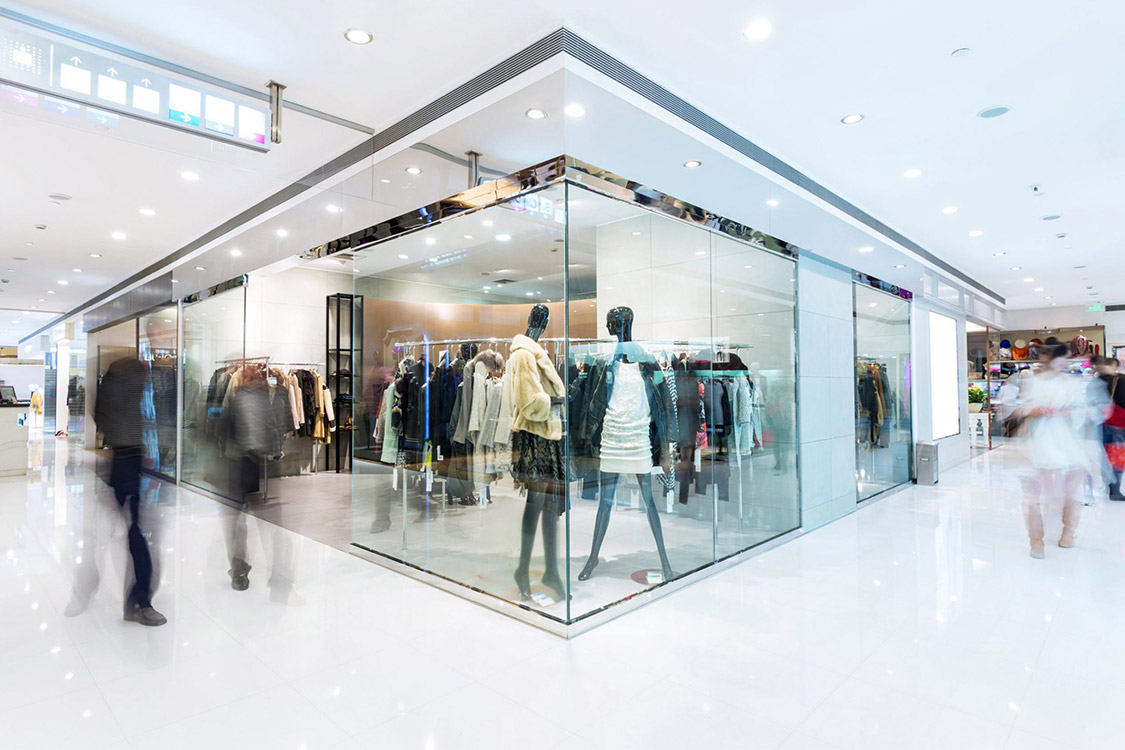Big Box Retail & Malls

What Brick and Mortar Retail Stores Will Look like 5 Years from Now
Retail is Dead
At least, that’s how Marc Andreessen sees it. The entrepreneur and tech investor were recently quoted saying that all physical retail stores will die, succumbing eventually to the vast sea of online competition. According to Andreessen, there will be one way to shop for everything and that way will be e-commerce. It’s also fair to say, given that Andreessen co-founded Netscape and is invested in a number of online properties, that he might be just a little predisposed to this extreme position. Nonetheless, his opinion caused some unrest in the retail community and should be taken seriously.
On the Other Hand…
A large portion of industry leaders have been vocal proponents of a somewhat different future for retail; one that includes both virtual and physical stores.
If humans shopped for no other reason than to acquire goods, Andreessen’s theory may have been more agreeable but in fact, we don’t shop just to get stuff- any more than we go to restaurants purely for nutrition. In fact, consumers often shop to fulfill other deep needs as well- the need to disconnect, socialize, and commune- and at times to simply get out into public. Why else would celebrities brave the harassment of paparazzi to shop for things they could undoubtedly have delivered to them on a silver platter? The physical, human experience of shopping is in some ways of far greater value than the good that comes along for the ride. So, while shopping is a means of acquiring the things we want and need, it is also a meaningful social activity that appeals to our deepest, human tendency to gather in tribes.


That said, between the futures that are described by Andreessen and ourselves, lies the truth. But one thing is quite certain; retail stores will be much different in the years to come than they are today.
How Different Will Retail Stores Be in the Future?

Regrettably, this is where the debate usually ends, with one side declaring brick-and-mortar retail dead and the other passionately defending its infinite existence. Rarely do we hear either side attempt to describe the specific ways in which stores are likely to evolve from what we see today. In other words, few seem willing to paint a picture of the store of the near future. So, Mapsted will take a shot at it.
More Customization

Stores will increasingly become places that we visit, not simply to pick up mass-produced articles but also to design and co-create special things with the personal assistance of experts. Whether it’s customizing a suit, building a career-specific computer, or designing the perfect bedroom, stores will be the point of collaboration and customization. These elements of customization will make for unique personal and physical experiences.
Less Product and More Production
With online players like Amazon prepared to ship just about anything we want in a matter of a day or two, our dependency on physical stores for mere distribution will continue to wane rapidly. Smart brands will have no choice but to focus increasing amounts of attention on making their store spaces experiential brand starting points, with high production value. Stages where the magic happens. Canadian sporting goods retailer Sport Check recently unveiled a concept store that might better be described as an adult amusement park for the sports enthusiast. Leveraging a variety of media and technology, the store has morphed into a wall-to-wall sporting experience. The store remains the most visceral expression of the brand’s essence.
Less Focused on Conversion
The purpose of retail will no longer be to solely convert every customer into a buyer of goods but rather to transform them into disciples of the brand itself. To begin a relationship- a dialogue that may play out in any number of buying channels; online, in-store, mobile, or elsewhere. It doesn’t matter where purchases take place. What matters is that the consumer falls in love with the brand and shares that love with others. The store maintains the potential to be that emotional center of gravity for the brand.
Less Established and More What’s Next
Consumers, particularly younger consumers are developing an insatiable appetite for what’s new and next. Therefore, managing the same 100 stores in a mall for years on end simply won’t do it anymore. Leases will shorten, new retail brands will evolve more quickly, old ones will die sooner and pop-up installations will rotate through the space. With the introduction of pop-up stores, it will be important to keep consumers frequently updated with the newest stores being added to your property.
Malls will need to implement a platform- Mall mApp, that enables managers to keep their shoppers informed about the newest stores and brands being added in the mall. Mall mApp will also guide consumers to the store via effortless hardware-free indoor and outdoor navigation. The change will be continual. The mall manager’s role will become that of editor and curator as the mall becomes a revolving door for new brands and concepts, in a relentless effort to captivate consumers.
More Remarkable
In a contracting market, there will be increasingly little room for sameness or duplicates. 10 retailers at the mall spelling variations of the same clothing styles will soon become 5 retailers who absolutely dominate the space, with unique and remarkable collections. Average, forgettable experience simply won’t pay the rent anymore and will be kicked to the curb by outstanding stores that bring something new and fascinating to the market.
So, is retail dead? Not even close. If anything, it’s the very pervasiveness of online alternatives that is causing the best stores to rise out of the ashes of 30 years of mediocrity, ushering in the true Golden Age of “the store”.
Frequently Asked Questions
Q1. What does the future of retail stores look like?
Ans. The majority of users have shifted to online shopping because it is much easier to find value-for-money products and discounts that are not available in retail stores. As a result, many retailers are turning to digital channels to attract non-metro customers. As a result, retail cannot thrive unless location intelligence is used effectively.
Q2. What is the future of retail in India?
Ans. Many people believe retail is dead, but according to an EY report, the Indian retail segment will be worth $1.5 trillion by 2030, up from 0.8 trillion in 2020. This demonstrates that there is enormous room for growth, which can only be fully realized once the COVID scare has passed.
Q3. Will the retail sector be revived again?
Ans. The majority of consumers polled preferred retail shopping because it allowed them to interact with people and physically experience products before purchasing. Many people are still willing to forego the convenience of home delivery to experience the store’s atmosphere.
Q4. Will malls make a comeback?
Ans. The COVID-19 outbreak altered people’s purchasing habits. With fewer people willing to risk virus exposure, online shopping became the norm. However, malls are popular hangout spots where people go to enjoy the atmosphere. This is why malls will make a comeback, though it is unclear when.
